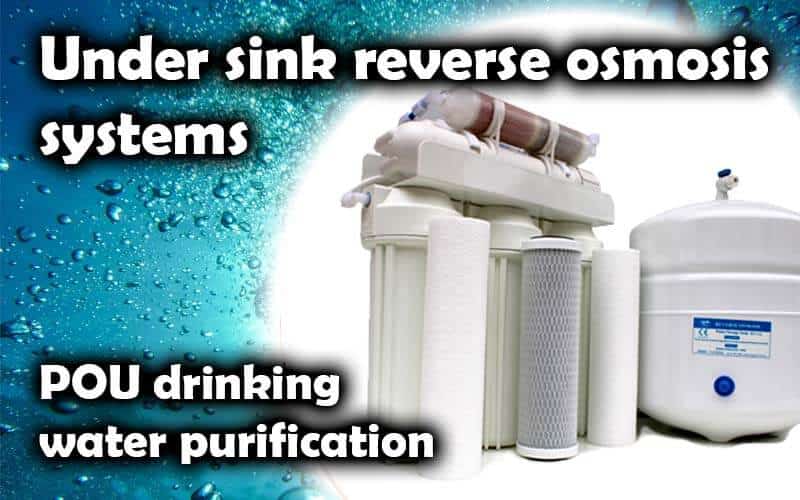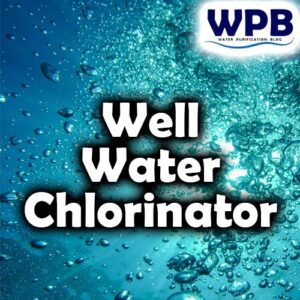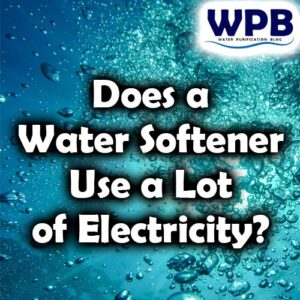- Domestic Water Purification (78)
- Emergency Water Purification (12)
- Industrial Water Purification (37)
- Outdoor Water Purification (8)
- Water pollution problems (5)
- Water Purification Processes (5)
- Water Quality for Plants (1)
Undersink reverse osmosis systems (also known as an RO system), are beside water softeners the most common way to improve water quality in your home.
While water softeners are designed for whole house water treatment and mainly for appliances protection from limescale, an under sink reverse osmosis water filter is the best way for point of use drinking water purification.
This kind of water filter is most commonly known as an RO system or a reverse osmosis water filter.

- Intro to POU undersink reverse osmosis system
- Key takeaways
- Some of the Best reverse osmosis systems
- 5 stage water filtration
- Most common configuration of rO systems
- How does a reverse osmosis system work?
- Filtered water from reverse osmosis systems – permeate
- How to check the quality of permeate?
- RO units applications
- Top advantages of reverse osmosis units
- Regular maintenance of reverse osmosis units
- How long do undersink RO systems last?
Intro to POU undersink reverse osmosis system
These small, point of use, water purification systems use a semi-permeable reverse osmosis membrane to remove dissolved salts and minerals, improving drinking water characteristics.
Reverse osmosis water is pure of all impurities and it can it can make a big step in your home improvement quality.
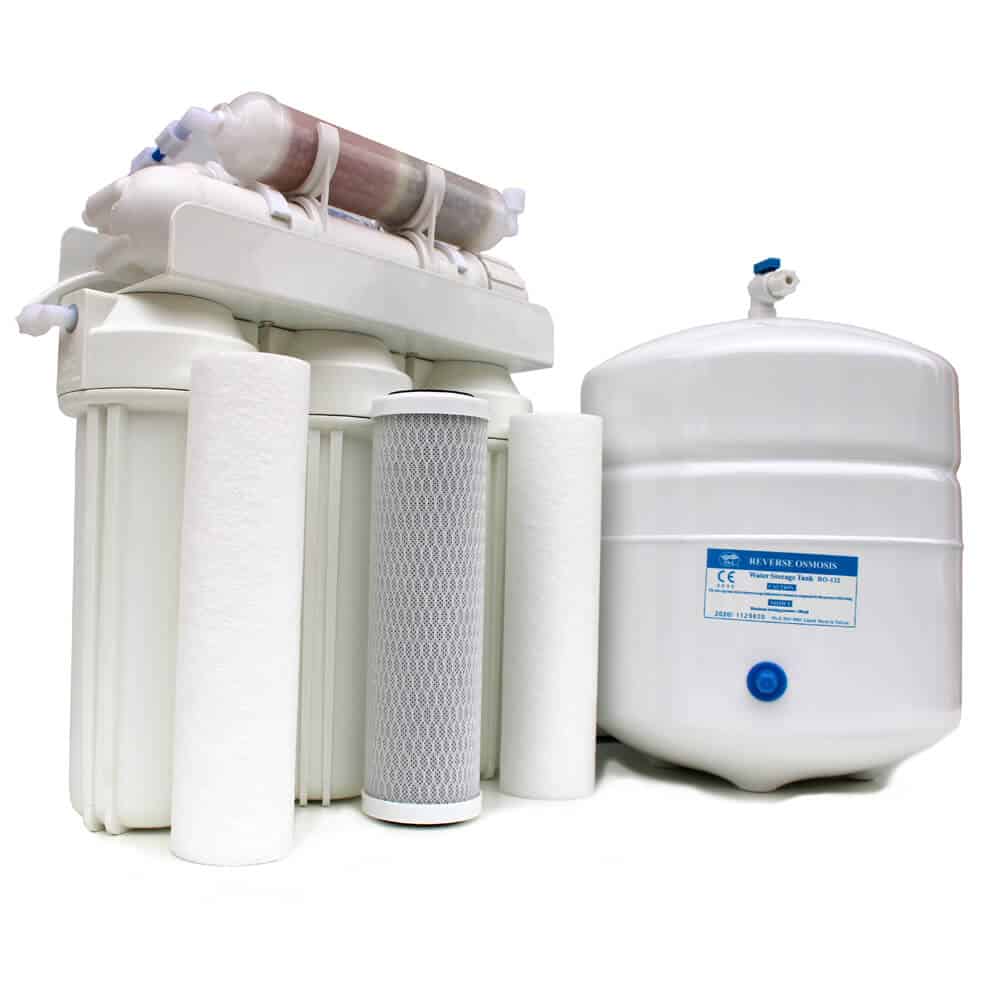
Key takeaways
- Undersink reverse osmosis systems are an easy way to improve drinking water quality.
- Low cost, easy installation, maintenance, and usage.
- No need for bottled water any more.
Some of the Best reverse osmosis systems
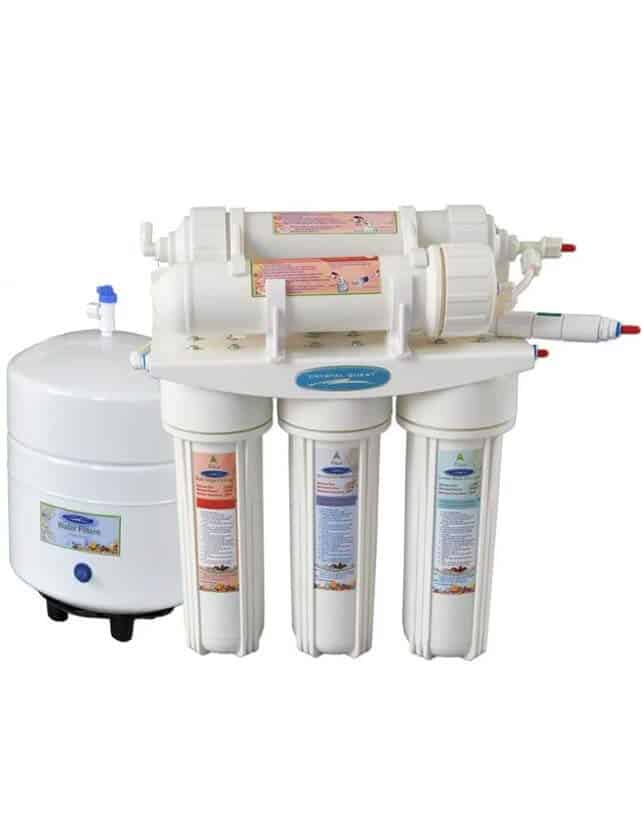
Reverse Osmosis Under Sink Water Filter – 1000C
- 50 gallons o purified water per day
- Granulated Activated Coconut Shell Carbon (GAC) Filter Cartridge, post membrane cartridge, to remove volatile organic carbon compounds (VOC’s), insecticides, pesticides, and industrial solvents.
Can be equipped with ionizer, mineralizer and oxidation cartridge.
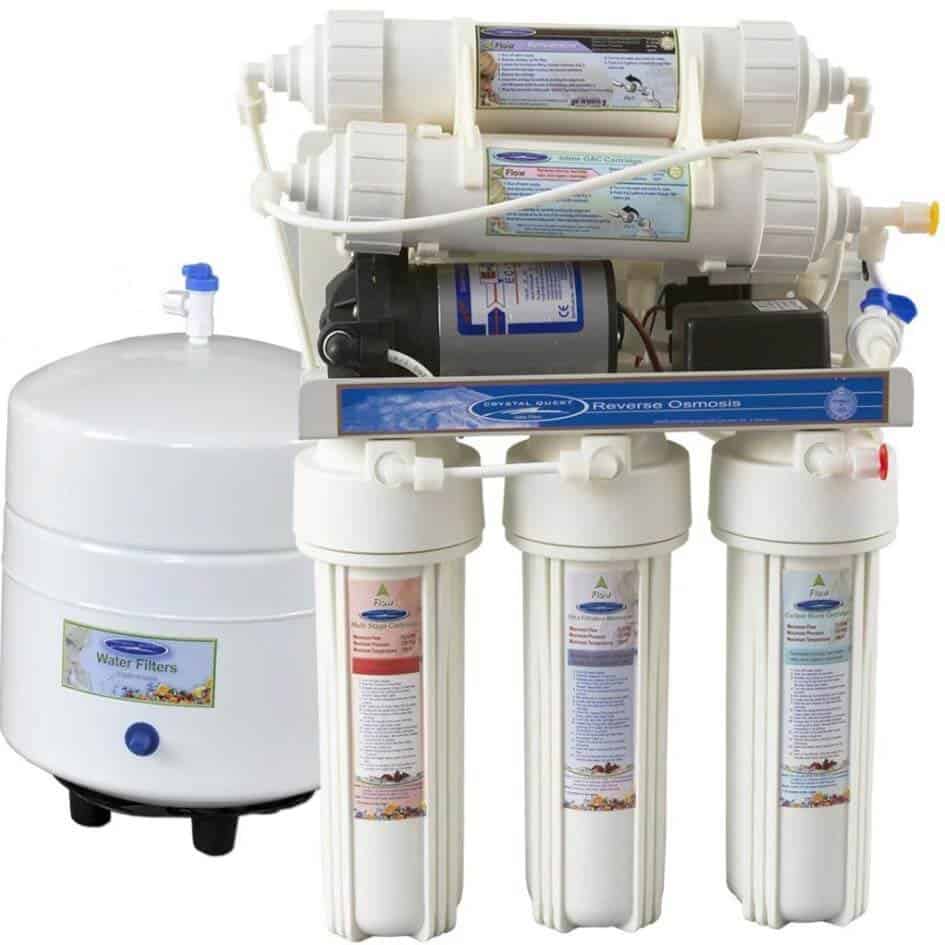
Reverse Osmosis Under Sink Water Filter – 1000CP
Undersink reverse osmosis system with a booster pump. It is ideal at places where the supply water has low pressure.
CRYSTAL QUEST® reverse osmosis membrane removes and filters particles as small as 1/10,000 of a micron as most inorganic chemicals (such as salts, metals, minerals) most microorganisms including cryptosporidium and giardia, and most inorganic contaminants.
Can be equipped with ionizer, mineralizer and oxidation cartridge.
The membrane is made of many layers of micro-thin film wound on a hollow central core. Water molecules can pass through the membrane, and dissolved salts and minerals are retained and thrown into the drain.
Undersink reverse osmosis units are water filters intended for the purification of small quantities of drinking water or smaller commercial applications.
Some models are also equipped with a booster pump and are an ideal solution in places where the pressure of the supply water is weak. The built-in booster pump increases the efficiency of the device and its operating capacity.
5 stage water filtration
Undersink RO units are based on five-stage water filtration, but there are many options that can be added to an RO unit.
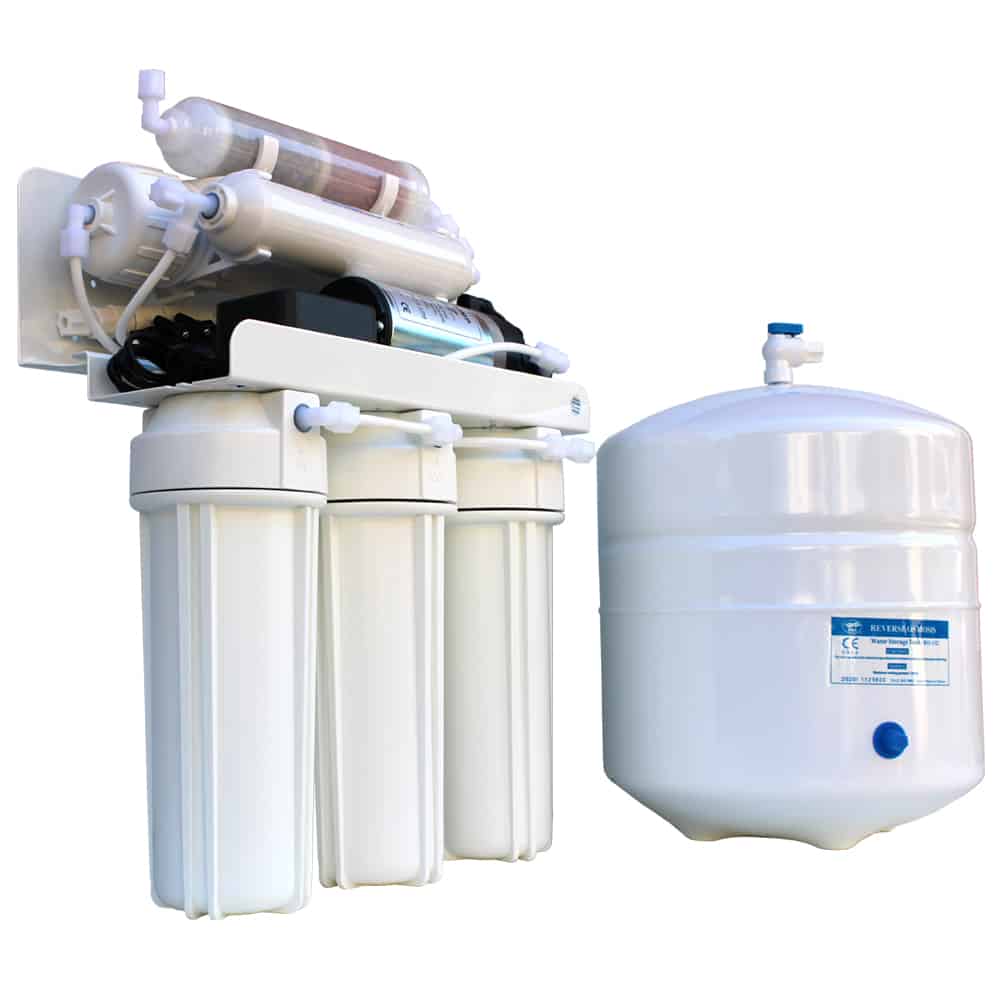
Most common configuration of rO systems
- mechanical pre-filter (1st stage),
- carbon block or granular activated carbon pre-filter (2nd stage)
- mechanical pre-filter (3rd stage),
- RO membrane (4th stage) which removes about 95% of dissolved salts and minerals from water,
- post filter with active carbon (5th stage) which additionally “polishes” purified water, giving it a more pleasant taste.
- additionally, a remineralizer can be installed on the device, which returns part of the salt and minerals to the purified water.
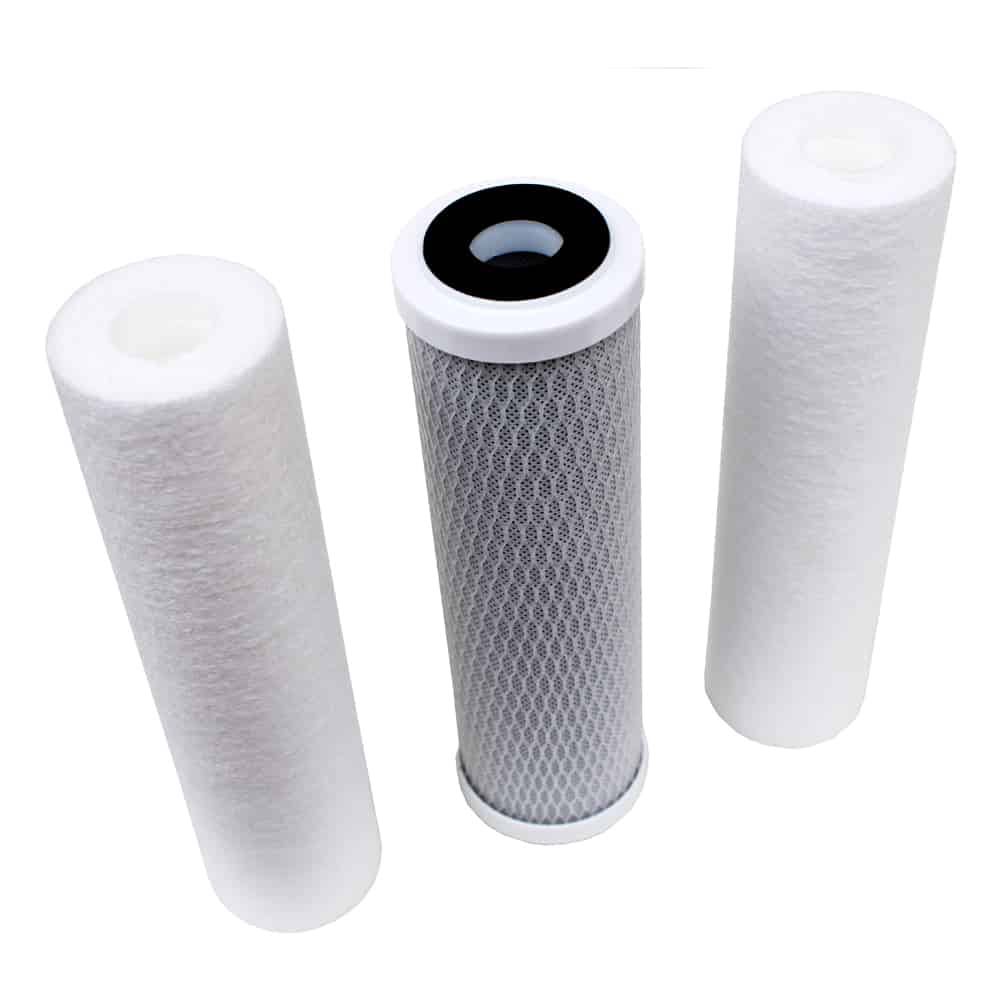
Depending on the pressure of the feed water, the smallest devices with a 50 gpd membrane can produce up to 50 gal of clean water (permeate) per day.
If the pressure is weak, the device will produce a smaller amount of water per day, which is compensated by the purified RO water tank.
How does a reverse osmosis system work?
Prefilters
The inlet water flows through the prefilters first. Their configuration and their number can be different, depending on the manufacturer.
It is very important to choose the right type of prefilters as they will provide longer RO membrane lifetime, and better overall water quality.
Prefilters role is to prepare the water for the reverse osmosis membrane. The most important thing is to remove chlorine as it can permanently damage an RO membrane.
Reverse osmosis membrane
The RO membrane separates the feed water into permeate (water free of salts) and concentrate (water saturated with salts, which is drained into the sewer). Permeate flows in the tank, where it is stored until required.
Filtered water from reverse osmosis systems – permeate
Permeate is the filtered water from an RO system. This is the water with up to 98% of removed dissolved salts and minerals.
Permeate is the product of a reverse osmosis system, and this is the water that is used for drinking.
How to check the quality of permeate?
To check an monitor the quality of a reverse osmosis filtered water you need a TDS meter.
To learn more about what is the TDS value read our article WHAT IS A TDS METER – BRIEF EXPLANATION OF TDS VALUE AND MEASURING
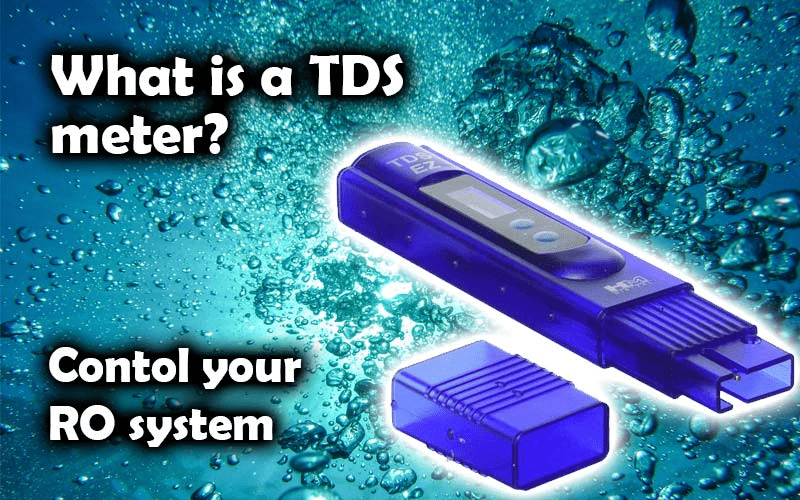
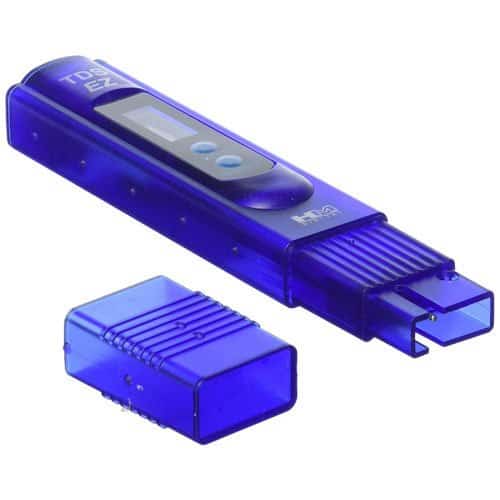
H&M Total Dissolved Solids / Conductivity Test Meter
This handy, portable meter is used by water quality professionals to test the effectiveness of your reverse osmosis filtration system.
Portable and handy TDS meter is a great water treatment test and effectiveness test of reverse osmosis house filtration systems. Advanced technology, easy use.
TDS meter features
- Advanced microprocessor technology
- Hold Function: saves measurements for record keeping
- Auto-off function: shuts off automatically after 10 minutes of non-use to save batteries
- Range: 0-9990 ppm. From 0-999 ppm, the resolution is in increments of 1ppm. From 1000 to 9990 ppm, the resolution is in increments of 10ppm, indicated by a flashing ‘x10’ icon
- LCD Display screen
- Factory Calibrated. Easily recalibrated with a mini-screwdriver
- Durable housing
- TDS values chart affixed to rear of meter
RO units applications
Besides providing high quality drinking water, undersink reverse osmosis units are ideal in any place where smaller amounts of pure water are required, and from which most of the dissolved salts have been removed. Such needs are in the photo and other laboratories, beauty salons, aquariums, steam irons, steam cleaners, air humidifiers, diluting alcohol, as well as many others.
Top advantages of reverse osmosis units
- installation and maintenance of this kind of water filter is very simple and economical
- the replacement of all elements can be done by the user himself – no need for costly services
- undersink reverse osmosis units without booster pump do not require an electrical supply
- undersink reverse osmosis units remove 95 – 98% of all ingredients from water
- easy reverse osmosis system installation under the kitchen sink
Regular maintenance of reverse osmosis units
The water filter maintenance is a periodic replacement of the units elements: prefilters, postfilter and RO membrane. Also, the device and tank should be periodically disinfected so that the system always provides microbiologically correct water. Replacement and disinfection are very simple, and with the instructions provided with the device, each user can do it himself.
Servicing is reduced to the periodic replacement of the pre-filter (every 6 – 8 months), RO membrane (2 – 4 years), post filter with active carbon (every other service), remineralizer (every other service). Periodic disinfection of the device is also of great importance, which can be done simply by adding chlorine dioxide solution during regular servicing.
How long do undersink RO systems last?
With right maintenance undersink reverse osmosis systems can last for many years.
The lifetime of prefilters is 6 to 8 months, RO membrane lifetime is 2 to 4 years, post filters and other addons should be replaced at every second regular service.

Who am I?
I am working as a water treatment technical manager and I have more than 25 years of practical experience in water purification.
Water purification expert
After many years of experience in water purification, I want to share some of my knowledge and get people to know the real importance of water quality.
Water purification and water treatment are very complex themes, so it is important to explain them in an easy-to-read way.
On this blog, you will find many understandable, easy-to-read information about water purification.
I hope you enjoy it, find some useful information, and thank You for reading.
More info on my work and my expertise on water purification can be found on my LinkedIn profile.

